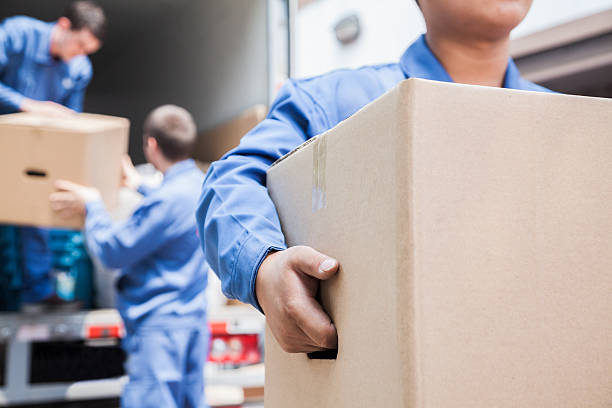How To Organise For Moving
Are you getting ready to move to a new home? Moving can be an exciting but stressful time, especially when it comes to organizing all your belongings and ensuring a smooth transition. In this article, we will guide you through the process of how to organize for moving, providing you with helpful tips and strategies to make your move as efficient and stress-free as possible.
Packing and Sorting
 Now that you’ve gathered all your moving supplies, it’s time to dive into the exciting (and maybe slightly overwhelming) task of packing and sorting your belongings.
Now that you’ve gathered all your moving supplies, it’s time to dive into the exciting (and maybe slightly overwhelming) task of packing and sorting your belongings.
The key to a successful move is to start early and stay organized. Begin by sorting your items into categories such as clothes, kitchenware, electronics, and furniture. This will make it easier to pack them later on.
As you go through each category, decide what you want to keep, donate, or throw away. This is a great opportunity to declutter and get rid of items you no longer use or need.
Once you have sorted everything, it’s time to start packing. Begin with the items you use less frequently, such as seasonal clothes or decorations. Use sturdy boxes and label them clearly to make it easier to unpack later.
When packing fragile items, wrap them in bubble wrap or newspaper to protect them during the move. As for furniture, disassemble any pieces that can be taken apart to make them easier to transport. Keep all screws and small parts in a labeled bag, so you don’t lose them.
If the thought of packing your entire house seems overwhelming, consider hiring professional packing services. They’ll take care of everything for you, from packing to unpacking, saving you time and stress.
Remember, the key to a successful move is staying organized. Take your time when packing and sorting your belongings, and don’t be afraid to ask for help if you need it. With a little planning and preparation, your move will go smoothly, and you’ll be settled into your new home in no time. Good luck!
Choosing a Moving Company
First, you should research and select a moving company that best suits your needs. When choosing a moving company, it’s important to consider their reputation and reliability. Look for movers that have a track record of being trustworthy and dependable.
You can start by asking for recommendations from friends, family, or colleagues who’ve recently moved. Additionally, don’t forget to check customer reviews online to get an idea of their past experiences with the company. This will give you insight into the level of service they provide and whether they can be trusted to handle your belongings with care.
Once you have a list of potential moving companies, take the time to contact each one and ask for a detailed quote. This will allow you to compare prices and services offered. Be sure to inquire about any additional fees or hidden costs that may not be included in the initial quote. It’s also a good idea to ask about the company’s insurance policies and what kind of coverage they offer in case of any damages during the move.
By doing your research and asking the right questions, you can choose a reliable and trustworthy moving company that’ll make your moving process smooth and stress-free.
Creating a Timeline
Once you’ve selected a moving company, it’s time to create a timeline to ensure a seamless and efficient relocation process. Organization is key in this step, as it’ll help you stay on track and avoid any last-minute stress.
Start by determining your move date and working backward from there. Consider factors such as packing time, transportation arrangements, and any necessary storage solutions. Break down the tasks into smaller, manageable chunks and assign deadlines to each one. This’ll help you stay focused and ensure that everything gets done in a timely manner.
Next, communicate with the moving company to coordinate the logistics of the move. Discuss your timeline with them and make sure they’re aware of any specific requirements or restrictions you may have. They can provide guidance on how to best plan your move and may even offer additional services such as packing assistance or storage options. Incorporate these details into your timeline to ensure a smooth transition.
Creating a timeline for your move is crucial to keep everything organized and running smoothly. By breaking down the tasks and assigning deadlines, you can stay on top of the process and avoid any last-minute surprises. Communicating with your chosen moving company will also help you incorporate their services into your timeline, ensuring a seamless and efficient relocation.
With a well-planned timeline, you can confidently move forward with your move, knowing that everything’s under control.
Decluttering and Downsizing
 Let’s tackle the task of decluttering and downsizing to make your move more enjoyable and relatable. Decluttering is an essential step in the moving process, as it allows you to get rid of unnecessary items and create a more organized living space. Start by going through each room and sorting your belongings into three categories: keep, donate, and discard.
Let’s tackle the task of decluttering and downsizing to make your move more enjoyable and relatable. Decluttering is an essential step in the moving process, as it allows you to get rid of unnecessary items and create a more organized living space. Start by going through each room and sorting your belongings into three categories: keep, donate, and discard.
Be ruthless in your decision-making process and ask yourself if you truly need or love each item. Remember, the less you have to pack and move, the easier and less expensive your move will be.
Downsizing is another important aspect of organizing for a move. It involves reducing the amount of furniture and belongings you have to fit into your new space. Evaluate each piece of furniture and determine if it will have a place in your new home. If not, consider selling or donating it.
Additionally, take advantage of the services offered by moving companies. They can provide packing and unpacking services, as well as help with organizing and decluttering. Utilizing these services can save you time and energy, allowing you to focus on other aspects of your move.
Decluttering and downsizing are crucial steps in organizing for a move. By getting rid of unnecessary items and reducing the amount of furniture you have, you can create a more organized living space and make your move more enjoyable. Remember to take advantage of the services offered by moving companies to make the process even smoother. Good luck with your move!
Labeling and Inventory
Labeling and inventory are key steps in streamlining your move and ensuring a smooth transition to your new home. When it comes to organizing for moving, labeling is essential. Take the time to label each box with a brief description of its contents and the room it belongs to. This will make unpacking a breeze as you won’t have to rummage through numerous boxes to find what you need.
Additionally, consider using color-coded labels or stickers to further categorize your items. For example, you can use green labels for kitchen items, blue labels for bedroom items, and so on. This simple system will help you quickly identify which boxes belong in each room, saving you time and effort during the unpacking process.
In addition to labeling, creating an inventory of your belongings is highly recommended. This involves making a detailed list of all the items you’re moving, along with their current condition. You can create a digital spreadsheet or use a moving app to keep track of everything. This inventory will not only help you stay organized during the move but also serve as a valuable reference in case any items get lost or damaged. It’s also a great opportunity to declutter further by identifying items you no longer need or want to take with you.
By taking the time to label and inventory your items, you’ll have a clear overview of your belongings and ensure that everything arrives safely and in the right place at your new home.
Preparing Furniture
To ensure a smooth transition to your new home, get your furniture ready by measuring doorways and hallways to ensure they’ll fit through easily. This step is crucial in preparing furniture for the moving process.
By measuring the dimensions of your furniture and comparing them to the width and height of your doorways and hallways, you can avoid any potential problems during loading and unloading. This will save you time and frustration, as well as prevent any damage to your furniture or walls.
If you find that certain pieces of furniture won’t fit through the doors or hallways, you can either disassemble them or consider hiring professionals who specialize in moving large and bulky items. They
have the expertise and equipment to safely maneuver your furniture and ensure it reaches your new home in perfect condition.
In addition to measuring, it’s also important to take extra precautions when dealing with delicate or valuable furniture, such as antiques. These items require special attention and care during the moving process.
Make sure to wrap them properly using appropriate packing materials, like bubble wrap or moving blankets, to protect them from scratches, dents, or other damages. It’s also a good idea to label these pieces as ‘fragile’ to ensure that they’re handled with extra caution.
If you’re unsure about how to properly prepare and pack your antiques, it may be worth reaching out to professionals who have experience in moving delicate items. They can provide you with valuable advice and guidance to ensure the safe transportation of your cherished possessions.
Gathering Supplies
 Before you begin preparing your furniture for the move, it’s essential to gather all the necessary supplies. Moving can be a daunting task, but having the right supplies will make the process much smoother. Start by making a list of everything you’ll need, such as sturdy boxes, packing tape, bubble wrap, and furniture blankets. These supplies will help protect your belongings during transport and prevent any damage.
Before you begin preparing your furniture for the move, it’s essential to gather all the necessary supplies. Moving can be a daunting task, but having the right supplies will make the process much smoother. Start by making a list of everything you’ll need, such as sturdy boxes, packing tape, bubble wrap, and furniture blankets. These supplies will help protect your belongings during transport and prevent any damage.
Additionally, don’t forget about labeling materials like markers and labels to keep everything organized. Once you have your list, head to your local hardware or moving store to gather all the supplies you need. Having everything ready before you start will save you time and stress in the long run.
Next, think about the vehicle you’ll be using for the move and gather any supplies specific to it. If you’re renting a truck, make sure to get the right size that can accommodate all your furniture and boxes. Consider renting equipment like dollies or furniture sliders to make loading and unloading easier. If you’re using your own vehicle, ensure that it’s clean and in good condition for the move. You may also want to invest in some cargo straps or bungee cords to secure your belongings during transit.
By taking the time to gather the necessary supplies specific to your moving vehicle, you’ll be well-prepared to handle the logistics of the move smoothly and efficiently.
Notifying Utilities
Now that you’ve gathered all the necessary supplies for your move, it’s time to move on to the next step: notifying utilities.
This is an essential part of organizing your relocation, especially if you’re moving long distances. You don’t want to arrive at your new home only to find out that the electricity or water hasn’t been set up yet. To avoid any last-minute surprises, it’s important to contact your utility providers ahead of time to ensure a smooth transition.
Start by making a list of all the utilities you need to notify, such as electricity, water, gas, internet, and cable. Give yourself plenty of time to make these arrangements, as some utility companies may require a few days’ notice.
Reach out to each provider and let them know about your upcoming move. They will guide you through the process of transferring or canceling services, and may even help you set up utilities at your new location. Remember to also inquire about any outstanding bills or fees that need to be settled before your move.
By taking care of these tasks early on, you can focus on other aspects of your move, such as booking movers or packing up your belongings.
Updating Address
Make sure you update your address with all necessary parties, such as the post office, your bank, and any subscription services you have. This is an important step to take when you organize for moving. By updating your address, you ensure that all your important mail and documents are delivered to the correct location.
Start by contacting the post office and fill out a change of address form. This will redirect your mail to your new address for a specified period of time.
Additionally, don’t forget to update your address with your bank and any other financial institutions you may be associated with. This will ensure that your statements, bills, and important financial information are sent to the right place.
Lastly, notify any subscription services you have, such as streaming platforms or monthly subscription boxes, so they can update your address in their records and continue delivering their services without interruption.
When moving to a new location, it’s also important to update your address with all relevant parties in Los Angeles. This includes your employer, schools, and any local government agencies.
Notifying your employer about your change of address is crucial to ensure that your paychecks, tax documents, and any other important work-related information are sent to the correct place.
If you have children, inform their schools about the address change so that all school-related correspondence can be directed to the new address.
Additionally, update your address with any local government agencies, such as the Department of Motor Vehicles, to ensure that your driver’s license and vehicle registration reflect your new address.
Lastly, if you are planning to rent a truck for your move, don’t forget to update your address when requesting rental quotes from different companies. This will help ensure accurate pricing and a smooth rental process.
Managing Finances
Don’t overlook the importance of managing your finances during this transition to ensure a smooth and worry-free experience. As you organize for moving, it’s crucial to consider the financial aspects of the process.
One of the major expenses you’ll encounter is the truck rental. Make sure to research different companies and compare prices to find the best option for your budget. Consider factors such as the size of the truck you’ll need and the duration of the rental. By doing your homework and finding the most cost-effective solution, you can save a significant amount of money.
In addition to truck rental costs, there are other financial considerations to keep in mind. Plan ahead for any unexpected expenses that may arise during the move, such as repairs or additional supplies. Create a budget that includes all the necessary expenses, from packing materials to transportation. This will help you stay on track and avoid overspending.
Don’t forget to update your address with your bank and other financial institutions to ensure a seamless transition in managing your accounts. Taking the time to manage your finances properly will not only save you money but also provide peace of mind during this hectic time.
Conclusion
 In conclusion, organizing for a move can be a daunting task, but with the right approach, it can be manageable and even a little bit exciting.
In conclusion, organizing for a move can be a daunting task, but with the right approach, it can be manageable and even a little bit exciting.
By packing and sorting your belongings, choosing a reliable moving company, and creating a timeline, you can stay on track and ensure a smooth transition to your new home.
Don’t forget to declutter and downsize, as that’ll not only make the moving process easier, but it’ll also help you start fresh in your new space.
Labeling and inventorying your boxes will save you time and stress when unpacking, and gathering all the necessary supplies beforehand will make the packing process much smoother.
It’s also important to notify your utilities and update your address to ensure a seamless transition of services and mail.
Lastly, don’t forget to manage your finances and budget for any additional expenses that may arise during the moving process.
With these steps in mind, you’ll be well-prepared and organized for your move, ready to start this new chapter in your life with confidence and ease.












